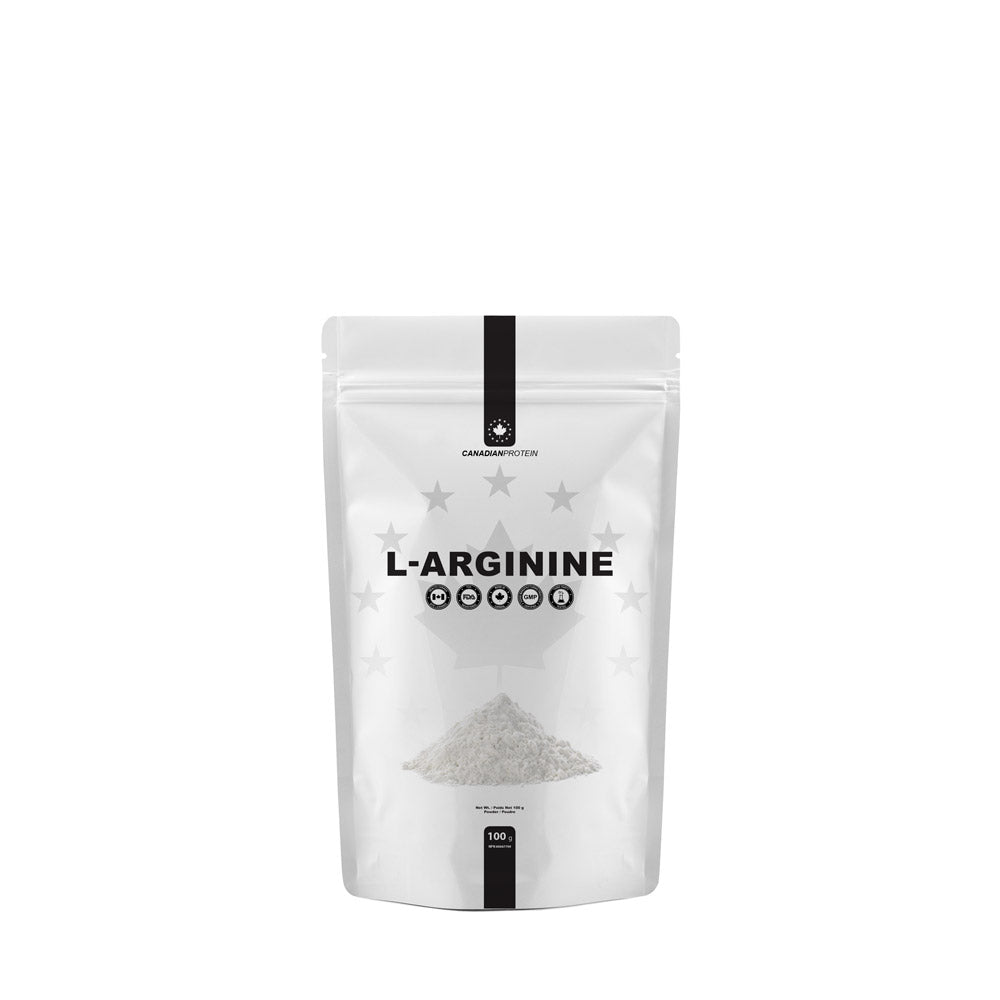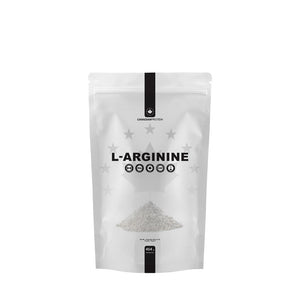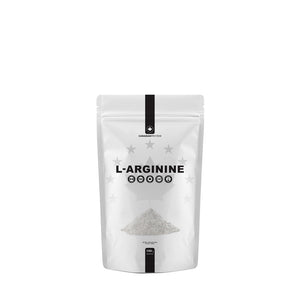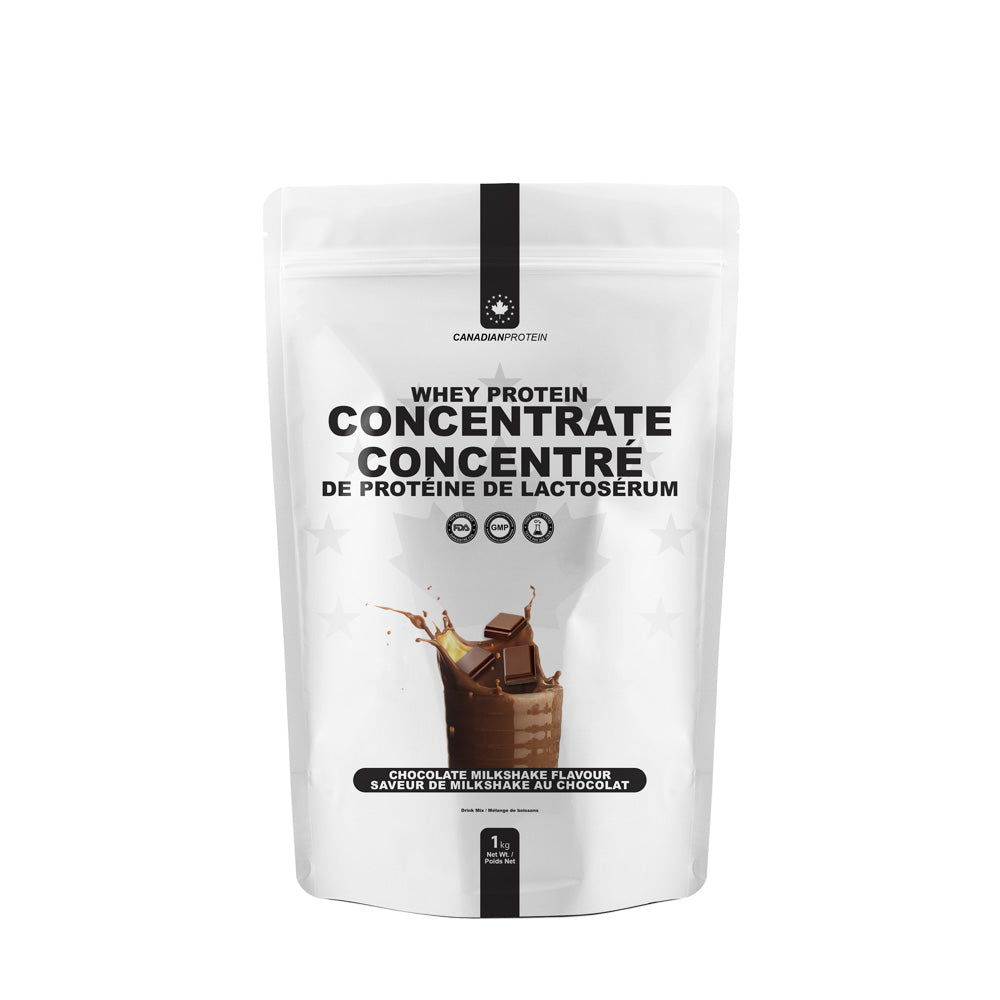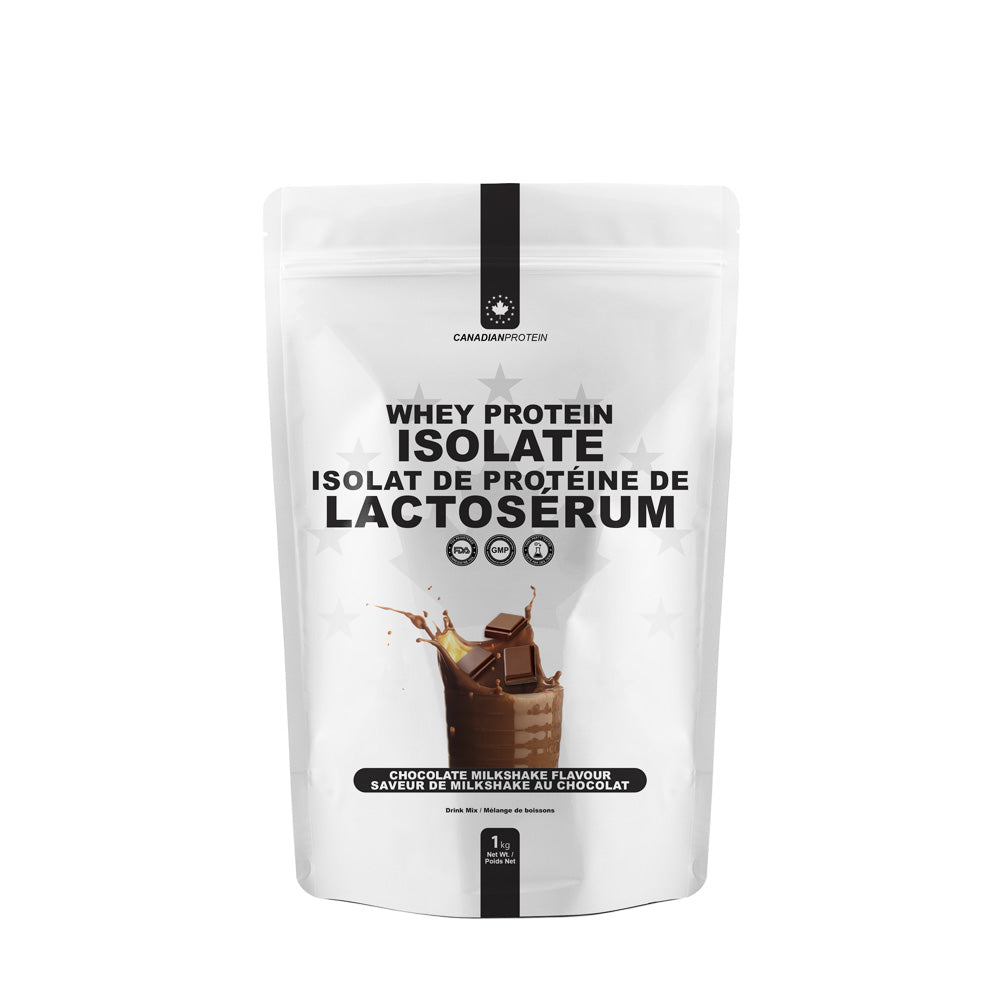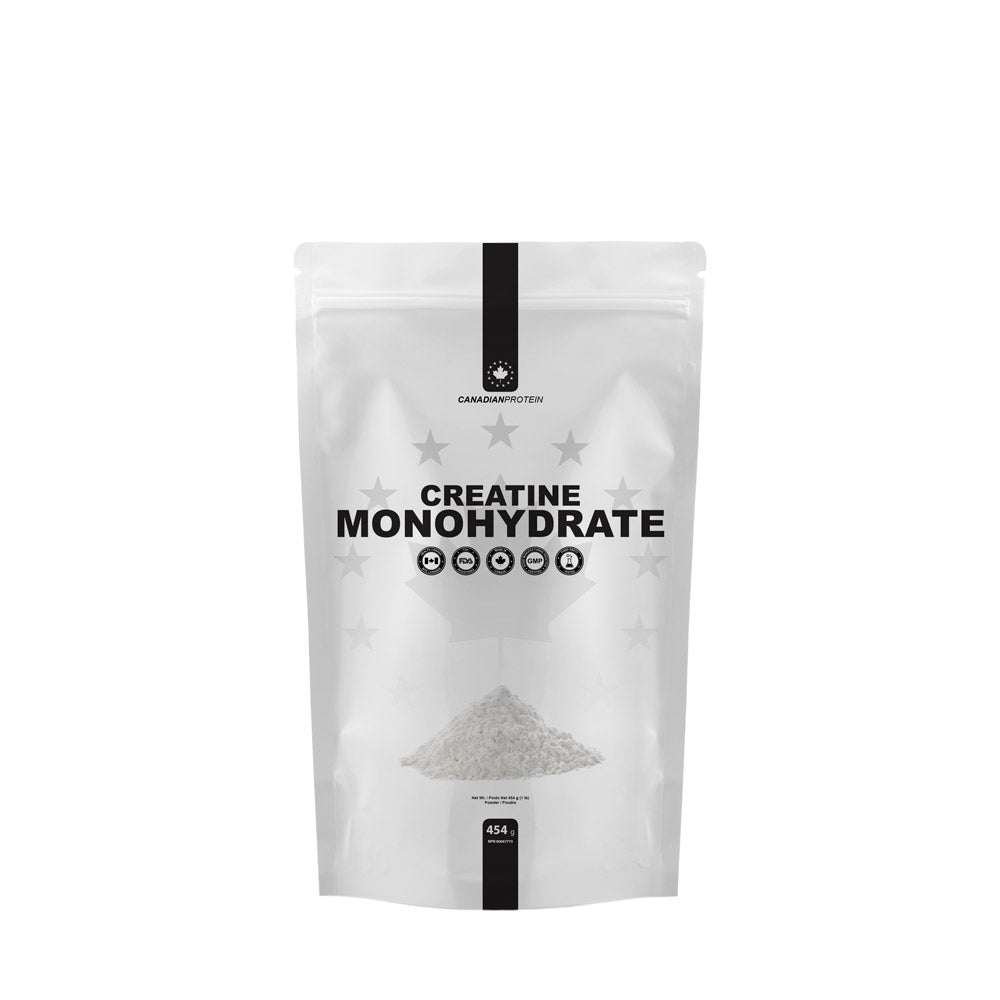30% Off All Supplements | Use Code: SUPP30
Some exclusions may apply.
L-Arginine
Limited Edition Flavours
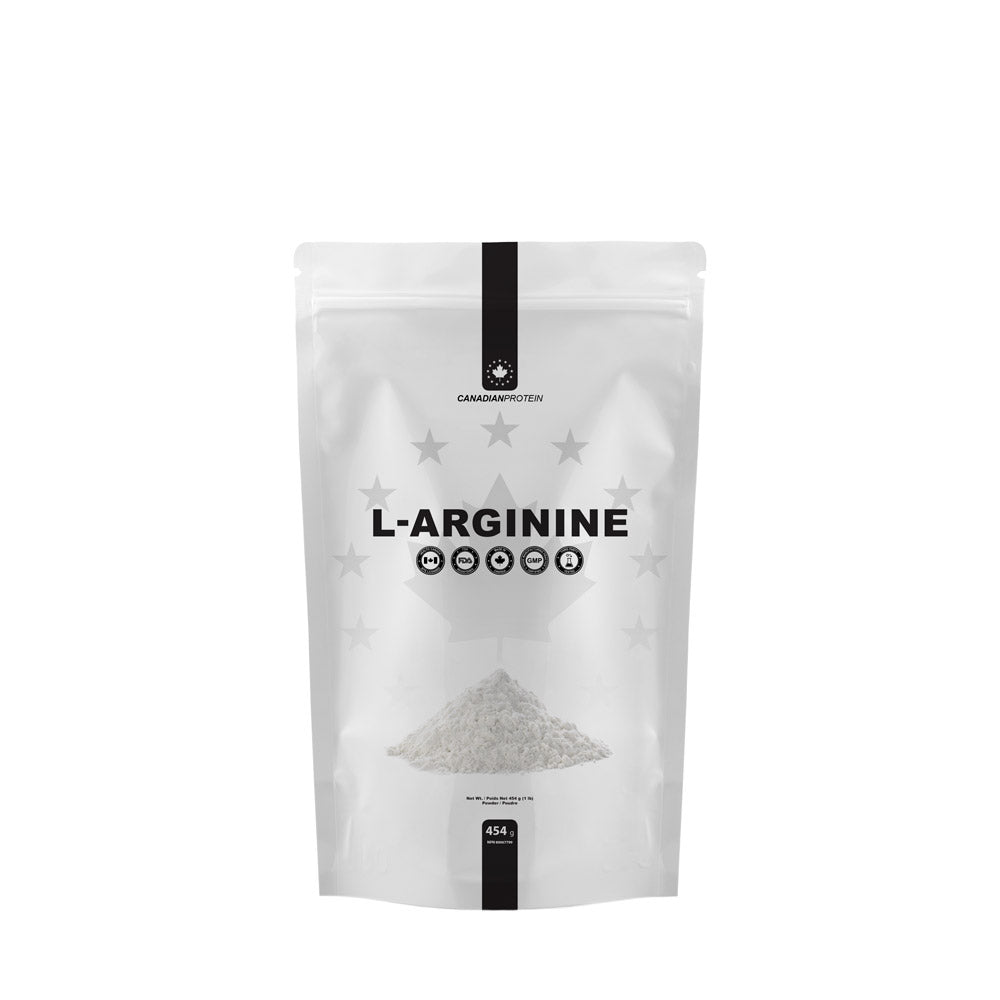
L-Arginine
Description
Studies have found that increased L-Arginine consumption, can provide a number of benefits for the human body, as well as for the physique, and athletic performance in general. It can help increase muscle mass, enhance recovery, reduce DOMS (Delayed Onset Muscle Soreness), increase vascularity and muscle pumps and more. Read the full product description for more information.
Contents
- 1 What is L-Arginine?
- 2 How does it work?
- 3 What are the main benefits of L-Arginine?
- 3.1 Improved athletic performance
- 3.2 Increased muscle mass
- 3.3 Increased muscle pumps and vascularity
- 3.4 How and when should it be consumed?
- 4 Arginine VS Arginine Alpha Ketoglutarate
- 5 What can it be stacked with?
- 6 L-Arginine Ingredients
- 6.1 Per Scoop
- 7 Potential Side Effects
- 8 Cautions and Warnings
What is L-Arginine?
L-Arginine is a non-essential amino acid that can be produced naturally by the human body, as well as being found in a number of dietary sources, including nuts, dairy, and meat sources. Just because it is non-essential however, this does not mean that arginine supplementation is not beneficial, because truthfully, it is, for a variety of different reasons. Studies have found that increased L-Arginine consumption, can provide a number of benefits for the human body, as well as for the physique, and athletic performance in general. Athletes and bodybuilders often supplement with L-Arginine, and include it in part of their muscle-building supplement stack. The benefits of L-Arginine come from the fact that it plays a vital role in protein synthesis, as well as helping to function as a precursor for the production of Nitroc Oxide, which in itself, helps provide numerous athletic performance advantages to the human body.
How does it work?
Basically, within the body, L-Arginine is converted into Nitric Oxide, which in turn then causes the blood vessels to widen and dilate, due to the fact that Nitric Oxide functions as a potent vasodilator. As the blood vessels widen and expand, this in turn allows more oxygenated blood, rich in nutrients, to pass through the vessels and be transported around the body and delivered to the major organs that happen to require it. On top of that however, it has also been linked with an increase in insulin production and growth hormone production, making it highly beneficial for bodybuilders and individuals looking to increase their lean muscle mass. On top of that, it has been found to play a crucial role in protein synthesis, making it essential for the growth and repair of muscle tissues, especially tissues following an extensive workout.
What are the main benefits of L-Arginine?
We’ve touched upon the main benefits associated with L-Arginine, now it’s time to look at them in more detail. Some of the main benefits include:
Improved athletic performance
One of the main reasons why this amino acid has been found to play such a key role in athletic performance, is all down to the fact that it is converted into Nitric Oxide. This Nitric Oxide dilates the blood vessels and allows more oxygenated rich blood to be carried around them. More oxygen and nutrients can therefore be supplied to the awaiting muscle cells in the body, which in turn will help to provide them with more energy, so they will be able to function harder and for longer, before they begin to fatigue.
Increased muscle mass
L-Arginine also plays a key role in protein synthesis, which is when the body synthesises new muscle proteins to replace worn and damaged ones as a result of an extensive workout or bout of strenuous physical exercise. Protein synthesis plays a key role in post-workout growth and recovery, making L-Arginine a very beneficial amino acid in terms of post-workout recovery.
Increased muscle pumps and vascularity
Ok, whilst vascularity and muscle pumps don’t provide any long-term benefits, they are able to serve as very beneficial motivational tools in the gym, which could help to spur you on and keep your motivation levels through the roof. Put simply, if you look better as you lift, this will serve as a psychological boost and so you’re far more likely to work that little bit harder in the gym.
Other benefits include:
- Increased muscle mass
- Enhanced recovery
- Reduced DOMS (Delayed Onset Muscle Soreness)
- Increased vascularity and muscle pumps
- Increased athletic ability and endurance
- Promotes the release of essential hormones
- Can help reduce the likelihood of hypertension, strokes, cardiovascular disease, and renal failure
- And much more...
How and when should it be consumed?
Health Canada Recommended Dose (powder): Scoop size: 5 g. Adults: 1 Scoop(s) 1 - 4 time(s) per day.
Arginine VS Arginine Alpha Ketoglutarate
Though they come from the same sources, L-Arginine and L-Arginine Alpha Ketoglutarate, or AAKG for short, are two very different supplements. AAKG for example, contains a salt derived from glutaric acid which plays a key role in the Krebs cycle of the human body. L-Arginine for example, has been found to play a much wider role in a person’s health and well-being, whereas AAKG is based more upon athletic performance.
What can it be stacked with?
As L-Glutamine plays such an important role in athletic performance and indeed in post-workout recovery as well, it can be stacked with a number of other supplements considered beneficial for gaining muscle mass. Common supplements that can be stacked with L-Arginine include: whey protein, creatine monohydrate, L-Glutamine, and Dextrose.
L-Arginine Ingredients
Per Scoop
Medicinal Ingredients (per scoop): L-Arginine .......................... 5 Grams
Non-Medicinal Ingredients: none.
Potential Side Effects
Always speak to your doctor before trying any new supplement and discontinue use if you experience any negative side effects. As not enough is known about the safety of L-Arginine, it is not suitable for pregnant and breastfeeding women. Some users may experience mild side effects, including:
- Nausea
- Dizziness
- Diarrhea
- Weakness
Cautions and Warnings
Consult a health care practitioner prior to use if you are pregnant or breastfeeding, if your cardiovascular condition worsens, if you have a renal/kidney disease or if you are following a low protein diet. Consult a health care practitioner prior to use if you suffer from a cardiovascular disease and are attempting an increase in physical activity or if you are taking medication for cardiovascular diseases, erectile dysfunction, and/or blood thinners.
Allergen warnings
Allergy Statement: This product is made in a facility that handles milk products, gluten, shellfish, soy, peanuts and other tree nuts.
Disclaimer: The above description does not constitute medical advice and is for informational purposes only and has not been evaluated by Health Canada, CFIA, or FDA. Please consult a properly licensed medical professional before consuming nutritional supplements. This product is not intended to treat, diagnose or cure any disease.
Suggested Use
Duration of Use
3-4 scoops per day: If you suffer from a cardiovascular disease, consult your health care practitioner for use beyond 6 weeks. Consult a health care practitioner for use beyond 12 weeks.
1-2 scoops per day: If you suffer from a cardiovascular disease, consult your health care practitioner for use beyond 6 weeks. Consult a health care practitioner for use beyond 6 months.
1 scoop per day: If you suffer from a cardiovascular disease, consult your health care practitioner for use beyond 6 weeks
Recommended Dose
Adults: Scoop size: 5 g. 1 Scoop(s) 1 - 4 time(s) per day
Ingredients
L-Arginine .......................... 5 Grams
Nutrition Facts
Nutrition Facts
Serving Size 5
Servings Per Container
| Amount Per Serving | ||
|---|---|---|
| Calories 0 | ||
| % Daily Value* | ||
| Total Fat 0g | ||
| Saturated Fat 0g | ||
| Unsaturated Fat 0g | ||
| Trans Fat 0g | ||
| Cholesterol 0mg | ||
| Sodium 0mg | ||
| Total Carbohydrate 0g | ||
| Dietary Fiber 0g | ||
| Sugars 0g | ||
| Protein 0g | ||
* Percent Daily Values are based on a 2,000 calorie diet. Your daily values may be higher or lower depending on your calorie needs:
